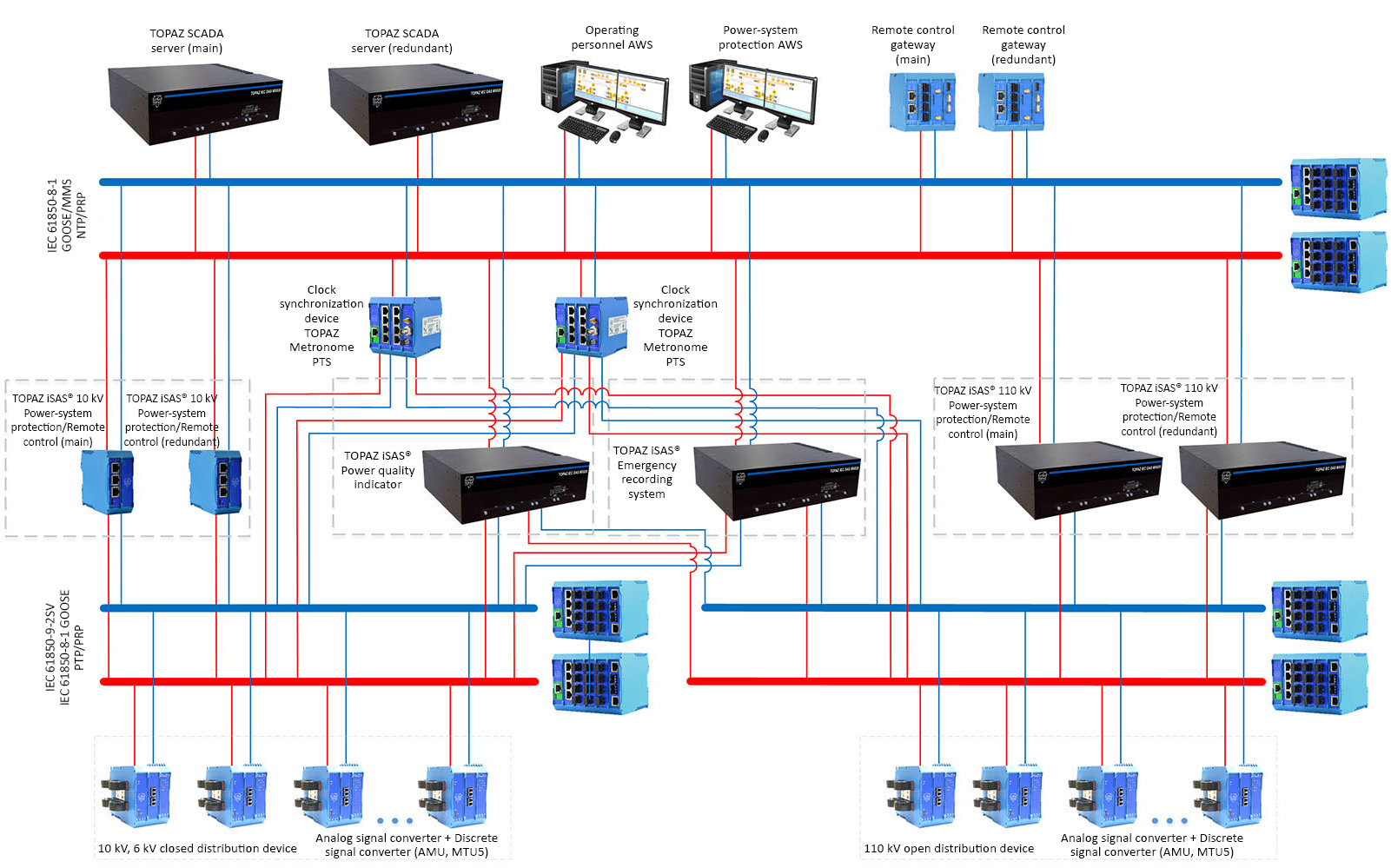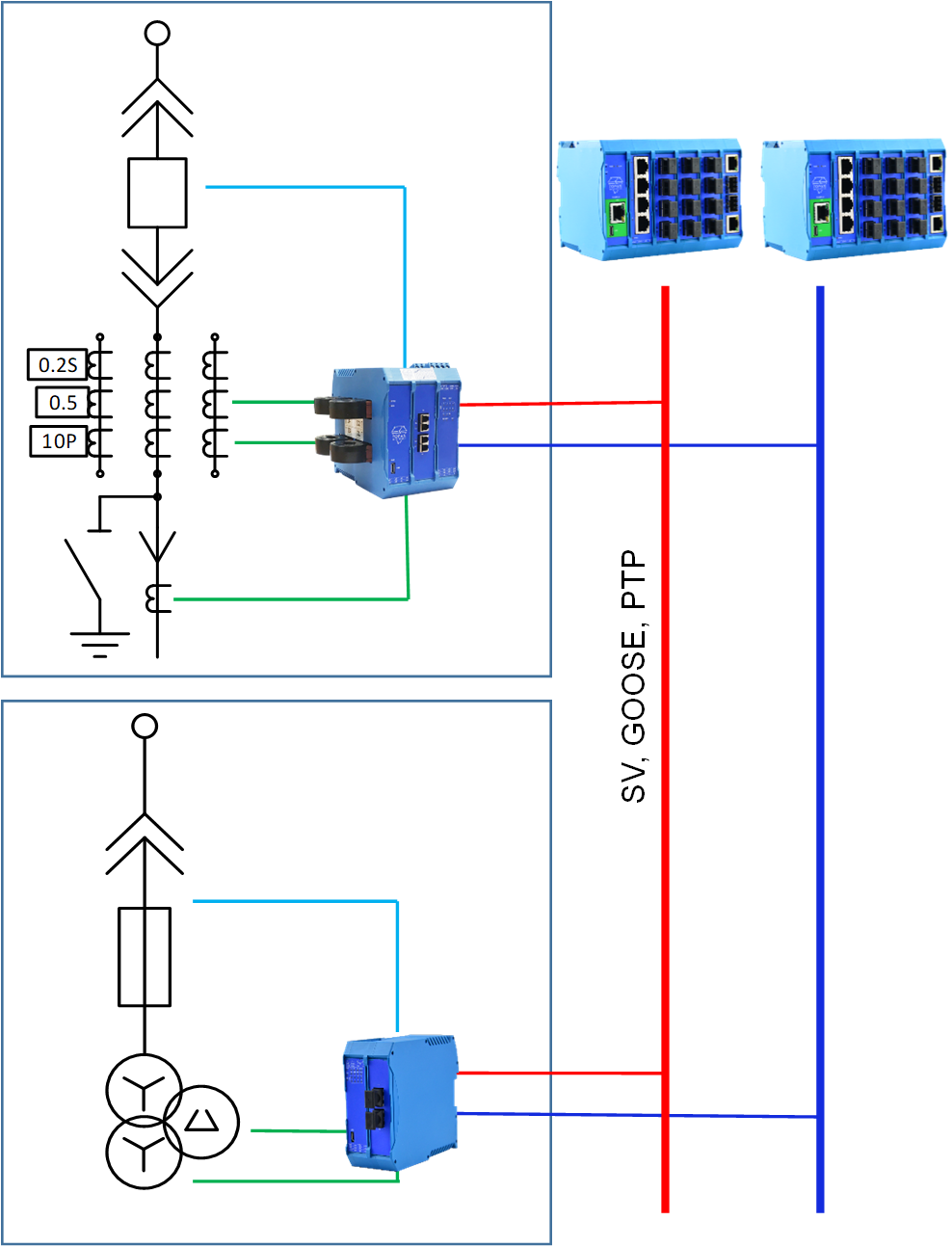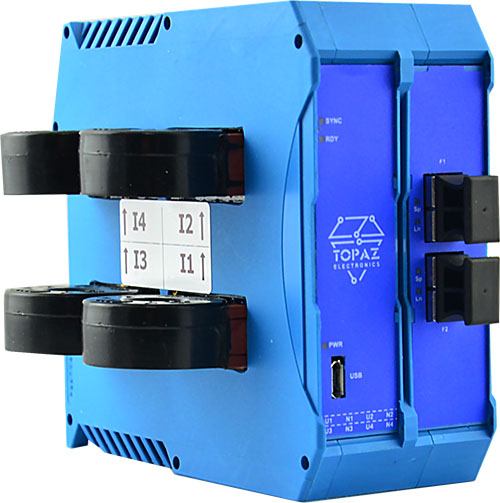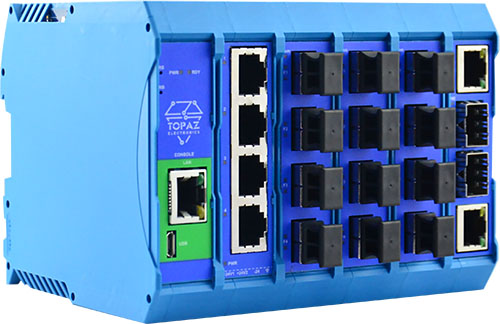
PLC Technology LLC is active in the development and manufacturing of equipment for digital substations.
Our extensive background includes our own vision of a digital substation concept as well as our hardware and software product line for digital substation construction, which makes it possible to implement digital substation technologies in a single vendor's turnkey equipment.
PLC Technology LLC is active in the development and manufacturing of equipment for digital substations.
Our extensive background includes our own vision of a digital substation concept as well as our hardware and software product line for digital substation construction, which makes it possible to implement digital substation technologies in a single vendor's turnkey equipment.
We believe that cluster-based systems show the highest performance for digital substation protection and control.
In many cases, cluster-based architecture reduces CAPEX and OPEX as compared to traditional protection and control systems.
A digital cluster is a digital substation segment that combines a set of functions in the form of software-based digital devices (Intelligent Electronic Device, IED). The devices are run on a single hardware platform with the necessary redundancy level.
The digital cluster may comprise several connections, for example, a bus section for power system protection and automated process control or the entire substation for performing a specific function, for example, emergency recording, power quality indication, automatic commercial accounting of power consumption, etc.

In addition, different clusters can use the same analog signal converters, discrete signal converters, or digital current transformers, voltage (potential) transformers, and switching devices as data sources.
The digital cluster is created on the basis of universal computing platforms (data access servers):
Each cluster is based on the TOPAZ iSAS® software and hardware system (Intelligent Substation Automation Systems).
The TOPAZ iSAS® software and hardware system is a universal computing module designed to be operated as part of a substation. The module provides automation and protection using specialized software.
This means that functions such as power protection, multifunctional measurement converter, metering, electricity quality control, emergency recording, etc. are implemented in the TOPAZ iSAS® as software applications based on the IEC 61850 information model, while their computing platform is selected based on the qualitative and quantitative analysis of their functions.
The list of software applications for implementing the substation protection and control functions included in the TOPAZ iSAS software and hardware system is given below:
● Power-system protection for 6–35 kV substation equipment
● 110–220 kV substation equipment
● Control of 6–220 kV connections
● Multifunctional measurement converter
● Emergency event recording
● Measurement, recording, control of electricity quality indicators
● Electricity metering

Example block diagram of a digital substation based on cluster architecture.
Creating a digital bus of a process requires integrating primary equipment (measuring transformers, switching devices, etc.) into a digital network.

For this purpose, analog signal converters and discrete signal converters are used
The role of analog signal converters for integrating the existing current and voltage transformers with the IEC 61850-9-2 bus is performed by TOPAZ MU devices that provide a digital interface of measuring transformers pursuant to parts 9 and 13 of the IEC61869 standard.
The product line of TOPAZ MU analog signal converters offers a wide range of modifications based on combinations of analog inputs for connecting to measurement and protection cores with secondary winding of current transformers and to secondary winding of potential transformers

Merging unit for the TOPAZ MU process bus
TOPAZ discrete input/output modules are used as discrete signal converters, supporting the exchange of information on the status of switching devices and controlled by commands in accordance with IEC 61850-8-1 (GOOSE).
|
|
|
TOPAZ analog and discrete signal converters support a wide range of switching functions, such as options related to the number of copper or optical Ethernet ports, support of the parallel redundancy protocol (PRP), and synchronization options based on 1PPS and IEEE 1588v2(PTP) signals.
Network equipment
A distinctive feature of a digital substation is a digital process bus formed by switches.
PLC Technology LLC has developed a product line of managed switches of the TOPAZ SW5хх series for creating a substation bus and the process bus.
Key features of the process bus implementation are PTPv2 Transparent Clock/Boundary Clock and VLAN IEEE 802.1Q traffic tagging.

Clock synchronization
All devices for integration with the process bus must be tightly synchronized among themselves.
This is needed to correctly process discrete events. Time synchronization is crucial for MU devices—lack of synchronization between them will cause false phase shift between current and voltage curves retrieved from different MU devices. As a result, false actuation of the power-system protection system may occur, as may lower accuracy of power and energy measurements, data distortions when creating oscilloscope records, etc.
Sync loss of 1 μs between two MU devices results in false phase shift of 1.08 arcminute.
PLC Technology LLC has developed TOPAZ Metronome PTS— a clock synchronization unit for substation devices.
This device supports NTP, SNTP, PTPv2 clock synchronization protocols and RSTP, PRP, HSR redundancy protocols. The device also has optical and copper 1PPS outputs.
The synchronization accuracy of the resulting timescale with UTC time is ±200 ns
|
|
|
Benefits of digital substation technology
The digital substation technology is an innovation in creating substation protection and control systems.
Our implementation experience has demonstrated that digital substation technology can also be efficient for 6–35 kV distribution networks if the appropriate architecture and equipment are selected.
A cluster-based digital substation offers a range of benefits as compared to conventional systems:
● Higher reliability (redundancy of critical functions)
● Reduction in CAPEX and OPEX (Using the digital substation technology transforms power-system protection terminals, bay controllers, measurement devices, recording units, and other secondary equipment into algorithms (software applications)
● Simple and cost-efficient system expansion (No extra equipment is needed to add more protection and control functions of higher quality; this is achieved by extending functional software components)
● Higher quality of equipment diagnostics
● Reduction of the substation control building size and the substation size as a whole
● Option to use alternative measurement sensors
● Deep automation of secondary system design and setup processes